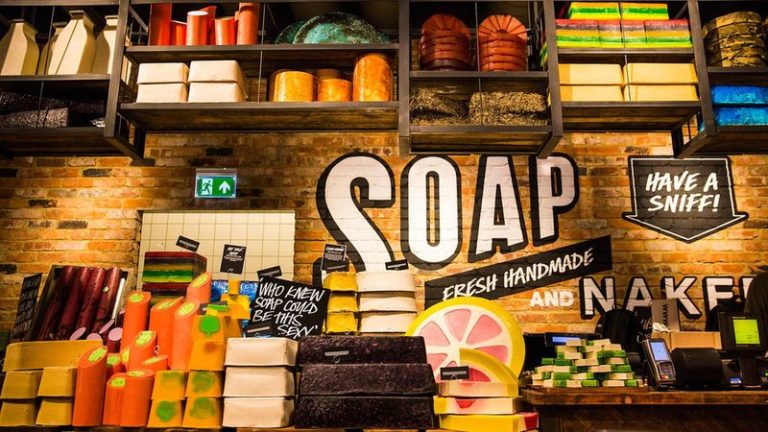Sustainable Marketing is not a new concept. Like traditional marketing, sustainable marketing aims to connect with the consumer in a meaningful way. It asks the consumer to believe in their products and most importantly, to believe that sustainability is as much a journey as it is a destination.
Unlike with traditional marketing, where the aim is to entice customers with products that appeal to a certain lifestyle or a feeling, sustainable marketing is shifting efforts on being more customer-centric than product-centric.
In saying so, companies who take sustainability seriously have realized that their customers are deeply critical of the products they buy. They want to know:
- where products come from
- how they are made
- who made them and
- how said product can be recycled at the end of their lifespan
Here are 4 lessons on how sustainable marketing can be achieved:
Be transparent
A product is only as good as the future value it creates for the company, the customer and the environment at large.
Patagonia is a company at the forefront when it comes to transparency. In 2011, they ran for the first time a Black Friday campaign in the New York Times proclaiming the following tagline to customers: “Don’t by this jacket”. Their aim was to directly tackle consumerism and make customers think twice about buying more products than what they really need.

This sort of “anti-marketing” was unheard at the time, but Patagonia did not stop there. Their Footprint Chronicles site shows both the positive and negative aspects of being environmentally conscious in a world where it’s not easy to balance profit and the environment.
Choose your channels
Social media has shifted the landscape of branding, and in recent years with the arrival of social media channels such as; Facebook, Twitter, Instagram and search engines like Google, we have changed the way customers perceive companies and their brands.
In 2016, Toyota launched their new hybrid Prius car Facebook advertising campaign in Australia. Their ad campaigns had been following the tried and tested route of traditional marketing through TV ads and magazine publications. But by recognizing the powerful nature of the Facebook platform to target ads to potential customers, Toyota reached 7.6 million people, increasing traffic by 53% on their website and a 41% increase in test drives.
In 2012, the Keep a Child Alive foundation launched Digital Death, an initiative that tapped directly to the public need to be connected to their favourite celebrities like Serena Williams and Kim Kardashian by silencing their Twitter and Facebook accounts. The only way to give their lives back was to donate to the charity and it was a success, reaching the $1 million target in just a few days.
Sustainability is long-term
Big corporations start at a disadvantage on the road to sustainability, especially the ones that have been negligent to the environmental or social risks of their products. Some continue to be short-minded, but some are going the distance in an attempt to make a difference.
In 2009, Coca-Cola launched their “Live Positively” campaign tackling different aspects of sustainability, with projects on sustainable packaging, education, and balanced living. They continue to this day in their journey, for example, by investing in stevia, a healthy substitute for sugar or through their 2017 “Love Story” campaign aimed at promoting plastic recycling.
Ethical cosmetics giant Lush has their whole business model tied to sustainability. The key to their success, being able to establish themselves as a cosmetic brand that is actively fighting for several social and environmental causes. From using eco-friendly packaging with a return to store recycling incentive, offering a solution to plastic-free products by presenting solid bar replacements for products such as shampoo to providing 100% handmade, organic cruelty-free products.

Tell your Story
A well know term in traditional marketing is “cause-related marketing”, i.e. a marketing campaign that is linked to a cause, be it environmental or social. This style of marketing is well known for its effective way to raise both awareness and money.
In 2017, State Street Global Advisers placed Fearless Girl in front of the famous Wall Street Bull. Installed on the cusp of International Women’s Day, Fearless Girl gained instantaneous viral success on social media as a symbol of resilience and equality for woman all over the world.
NGO’s are particularly effective at this type of marketing with PETA and Greenpeace frontrunning advertising campaigns aimed at eliciting strong emotions from viewers. They employ another form of marketing called “guerilla marketing” which is highly impactful despite a smaller budget from the side of the marketer.
UNICEF and Pampers launched a cause-related marketing campaign aimed at raising awareness and funding for newborn tetanus vaccines and have since funded 300 million. All it took was a simple message: 1 pack = 1 life-saving vaccine.

It has since been founded by Linda Scott from the University of Oxford that UNICEF’s brand name aided considerably in building new business for Pampers and aided in the retention and recruitment of staff at Procter & Gamble whilst bringing in sizable donations for UNICEF.
Sustainable Marketing campaigns challenge the viewer to make decisions based not only on products but on what the impact of the company in the world is and most importantly what are they doing to change and better that impact.
The message is sometimes more important than the product itself, and in a market where so much similarity between products exist, a message that resonates positive impact can truly make the difference to the consumer.

